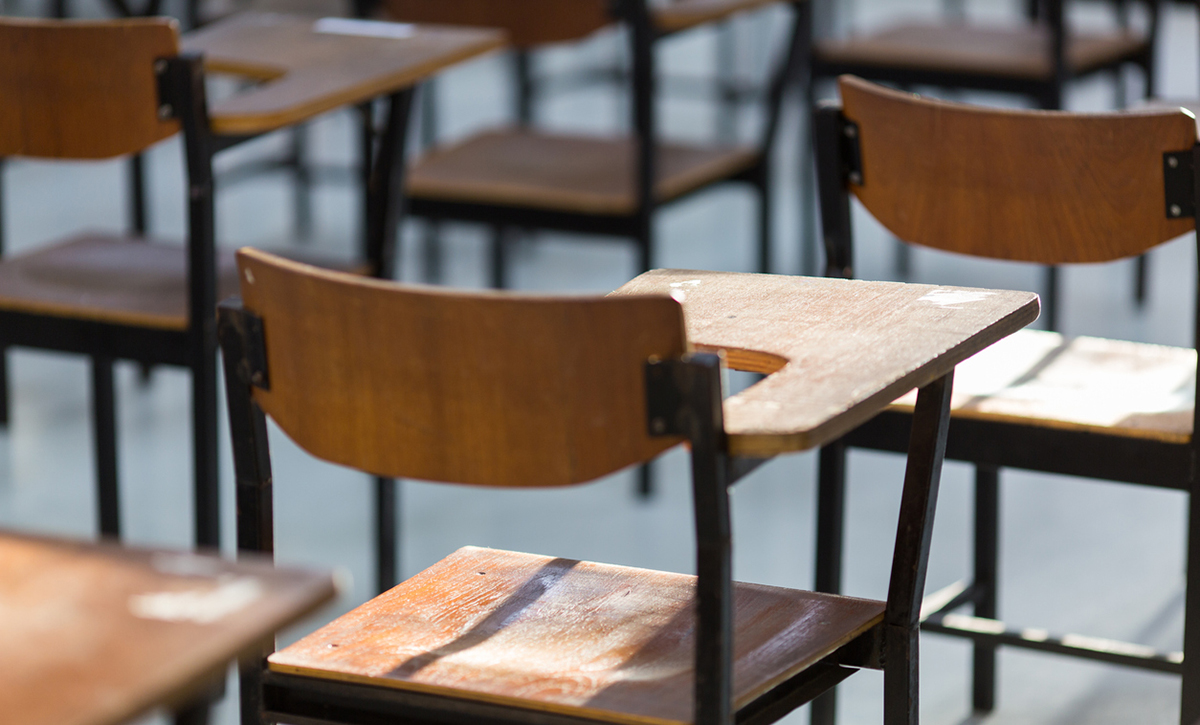Ohio School-to-Prison Pipeline Bolstered by ‘Exclusionary Discipline,’ Absenteeism
Report: Chronic absenteeism feeds a “negative cycle” that can lead to the juvenile justice system.

Get stories like this delivered straight to your inbox. Sign up for The 74 Newsletter
“Student disconnection” spurred on by mental health factors, disproportionate discipline and a lack of in-school supports plays its part in driving Ohio’s absenteeism rate, according to a new report from an Ohio think tank.
That absenteeism, and the contributing factors of it, can create “an entry point in the school-to-prison pipeline,” according to Policy Matters Ohio, who released a new study on the issue this month.
“Mental health factors such as depression, anxiety and chronic stress reduce kids’ desire to attend school,” Policy Matters stated. “Trauma and violence exacerbate those issues, increasing the likelihood that a student will become chronically absent, defined in Ohio as missing 10% of the school year for any reason, excused or unexcused.”
Chronic absenteeism feeds a “negative cycle” that can lead to the juvenile justice system, which disproportionately impacts Black students and economically disadvantaged families, according to the study.
In the analysis of state data, Policy Matters found that students who have been “adjudicated, or found guilty, in the juvenile court system” graduated at a rate of just 23.2% in 2022.
“Young people who encounter the juvenile justice system face challenges that follow them throughout their lives,” wrote researcher Tanisha Pruitt, Ph.D. “They have more difficulty accessing education, economic security, health care and other opportunities to live healthier and happier lives.”
Those disproportionate numbers of students of color and low-income students are fed by the connections between attendance, economic security and school resources, the study found.
“These are the unsurprising consequences of locking communities out of broad public investments through segregation, red-lining and the legacy of chronic inequitable school funding,” Pruitt wrote.
Also feeding the absenteeism rate, its implications for engagement with the juvenile justice system and lowered student outcomes, is “exclusionary discipline,” including expulsion and suspension. Those types of discipline are “often counterproductive, leaving excluded students further behind their peers and more likely to leave school altogether,” according to the report.
Using data from the Ohio Department of Education and Workforce, Policy Matters found that out-of-school suspensions made up more than 53% of 394,582 cases of exclusionary discipline used between 2022 and 2023. In-school suspensions made up 29%. Expulsion was used in 1.13% of cases.
The study cited a discipline analysis done by Children’s Defense Fund of Ohio from 2022 to 2023, which found “significant racial disparities” in exclusionary discipline, with Black female students found to be six times more likely than white female students to be suspended or expelled, and Black male students found to be 4.3 times more likely than their white counterparts in the state.
“Despite the increased scrutiny, potential consequences and state-level policy reforms, exclusionary discipline is still too common and disproportionately distributed,” Pruitt wrote in the report.
Pruitt brought up 2018’s “Supporting Alternatives for Fair Education Act,” a bill that sought to change school discipline practices by prohibiting expulsions and suspensions, but only for pre-K through third grade students. An exception was allowed in the act that allowed those types of discipline in those grade levels if conduct threatened the safety of school personnel or students.
But for any student older than third grade, there were more options in terms of discipline, including emergency removal and in-school “alternate discipline.”
Pruitt praised the law for requiring Positive Behavior Intervention and Supports (PBIS), a method she said is part of “restorative justice approaches,” which “are more effective than exclusion at supporting student achievement” and could be expanded in Ohio.
“The PBIS model, if expanded and accompanied by funding to hire staff, implement programming and establish needed health services at school, would be a sure step in securing more kids’ futures and closing the school-to-prison pipeline,” Pruitt wrote.
Other recommendations included in the report focused on improving employment practices for parents to create manageable work schedules and create more connection with their children, urging more refundable tax credits to help economically disadvantaged families, along with pushing an increase in staff and student support funding (including full funding of the Fair School Funding Plan for public schools).
“To meet (student) needs, schools need funding,” the study stated. “Kids need more school counselors and nurses, more mental and behavioral health services and a more holistic approach to education.”
Ohio Capital Journal is part of States Newsroom, a nonprofit news network supported by grants and a coalition of donors as a 501c(3) public charity. Ohio Capital Journal maintains editorial independence. Contact Editor David Dewitt for questions: [email protected]. Follow Ohio Capital Journal on Facebook and X.
Get stories like these delivered straight to your inbox. Sign up for The 74 Newsletter

;)